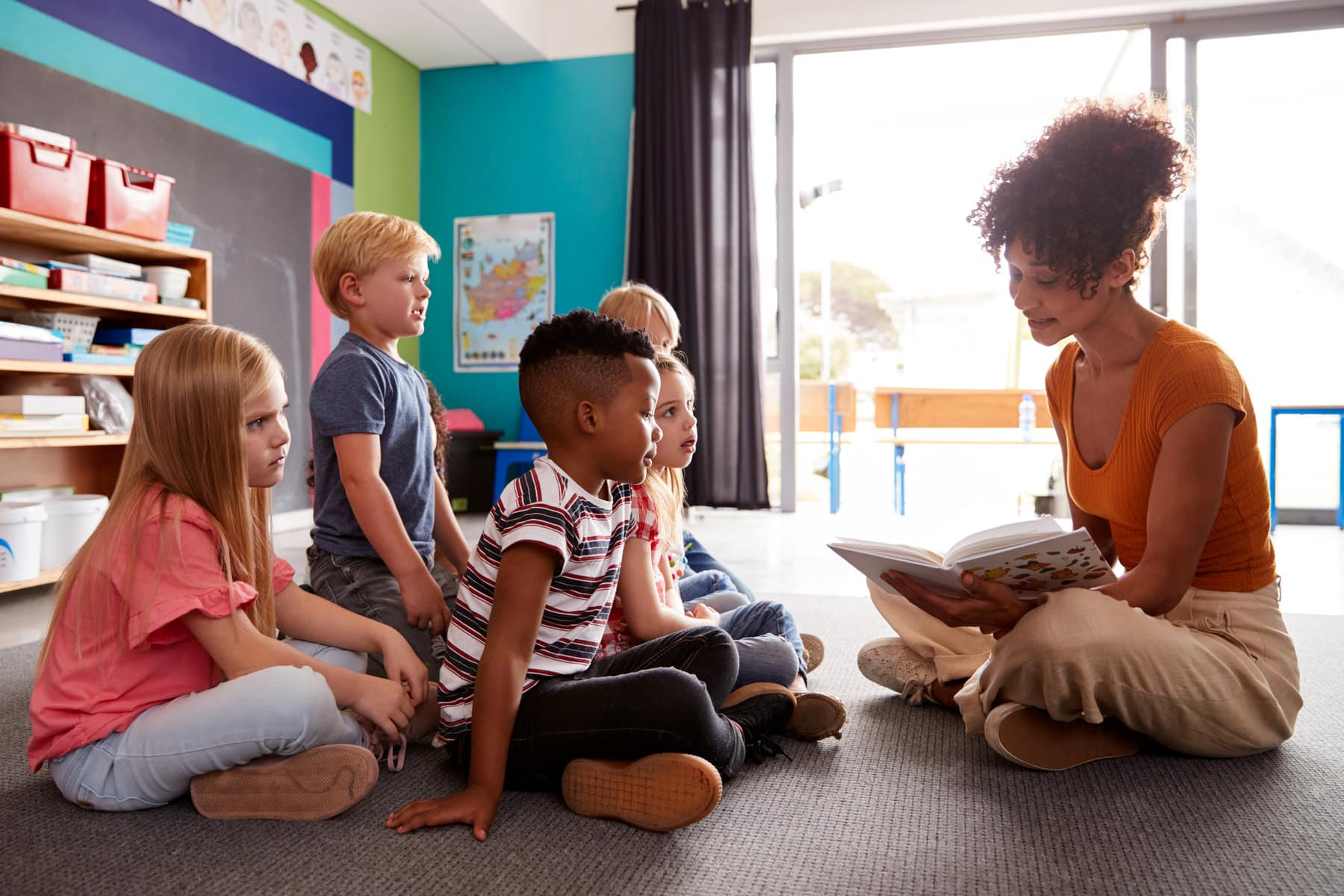Maintaining the attention of an entire class can often be a challenge. The brains of children are still developing, making their attention spans much shorter than those of adults. Rather than letting that be a problem, you can structure your lesson plans based on your knowledge of the average student’s attention span and use specific strategies to keep them focused during learning time.
Read on to learn more about the average attention span for elementary school students based on current research. Then, find strategies to maintain student attention in class–including five fun focus games that make great brain breaks.
What Is the Average Attention Span for Elementary Students?
On average, a child’s attention span is about two to three minutes per year of age.[1] This means that a kindergartner’s attention span may be between 10 and 18 minutes long. The average attention span of a third grader may be between 16 and 27 minutes.
Some of your students may have conditions like attention deficit hyperactivity disorder (ADHD) that affect their ability to focus, resulting in shorter attention spans. If you have students with learning disorders that affect their ability to focus, work with their families and your school specialists to coordinate necessary accommodations and better understand their needs.
Strategies to Maintain Student Attention
When determining ways to maintain students’ attention in class, consider their grade level. Students in older elementary grades will have longer attention spans than younger students. Plan your lessons around the average attention span for your grade level, with brain breaks in between so paying attention in class is manageable.
 Brain breaks are short activities (usually between 5 and 10 minutes) that allow students to stand up and get their wiggles out. You could, for example, have a dance party or do jumping jacks as a class. If you have a few different lessons to teach before a larger break like recess or lunch, brain breaks can help students refocus and reset, so they’re ready to learn again.
Brain breaks are short activities (usually between 5 and 10 minutes) that allow students to stand up and get their wiggles out. You could, for example, have a dance party or do jumping jacks as a class. If you have a few different lessons to teach before a larger break like recess or lunch, brain breaks can help students refocus and reset, so they’re ready to learn again.
Additionally, visuals can help students pay attention and better understand new information, especially helpful for visual learners.[2] You could use props like cubes or coins to make the concepts clear when teaching students how to add or subtract. You could also encourage students to draw a picture of a scene as you read a story aloud, keeping their minds engaged rather than wandering off.
5 Focus Games for Kids
Focus games can make for great brain breaks in between lessons as a fun way to help students refresh their minds and maintain attention. Use these five focus games, including new and familiar options, in the classroom to enhance students’ listening and focus skills.
Did you know that this classic children’s game can remind children to listen and focus in class? It can also be helpful for teaching young learners who get distracted easily to follow instructions.[3]
If you have space in your classroom, you could play a quick round of Red Light, Green Light before or after a longer lesson to reawaken their concentration.
2. Mindfulness Meditation
Mindfulness is an important skill not only for helping students focus in class but for teaching them to recognize and listen to their thoughts, emotions, and actions. Most mindfulness meditation activities for kids are short enough to fit within your classroom routine.
Calm, a mindfulness meditation website and app, offers free annual subscriptions for teachers where you can find mindfulness activities for young learners.
3. Memory Games
Memory games like matching cards can help students concentrate and retain new information.[4] Plus, presenting new information or skills as a game can motivate students to learn and have fun along the way.
If you are teaching students new vocabulary words, you could print out paired flashcards with the word and definition.[5] In small groups, have students lay out the cards face-down on their desks and see how many words they can match to their definitions.
4. Hocus Pocus, Everybody Focus
Hocus Pocus, Everybody Focus is a fantastic brain break game that can teach students to listen carefully and focus during class. Click here to learn how to play with your students.
5. Simon Says
Another popular children’s game, Simon Says, can teach children to stop and think before responding.[6] If you have students in your class who struggle with speaking out of turn or distracting classmates, this activity can be a fun way to remind them to stay mindful and focused.
Looking for more classroom strategies based on the science of how children learn? Visit the free Get Practical with the Science of Reading series from Waterford.org Director of Curriculum Julie Christensen.
Sources:
1. Boese, M. “Encouraging Young Children to Develop Their Attention Skills.” Edutopia. August 4, 2022. https://www.edutopia.org/article/encouraging-young-children-develop-their-attention-skills
2. Levy, S. “15 Little Tricks to Get Your Class’ Attention (and Hold It).” Busy Teacher. https://busyteacher.org/6047-15-tricks-get-your-class-attention-hold-it.html
3. Mcilroy, T. “How to Play the Red Light Green Light Game with Preschoolers.” Empowered Parents. https://empoweredparents.co/how-to-play-red-light-green-light/
4. Teach.com Staff. “7 In-Class Activities to Improve Concentration in Children.” November 20, 2017. https://teach.com/resources/seven-in-class-activities-to-improve-concentration-in-children/
5. Family Education Staff. “Vocabulary Memory Game for Kids.” https://www.familyeducation.com/fun/indoor-activities/vocabulary-memory-game-kids.
6. Shafer, L. “Fun and (Brain) Games.” Harvard Graduate School of Education. August 29, 2016. https://www.gse.harvard.edu/news/uk/16/08/fun-and-brain-games




